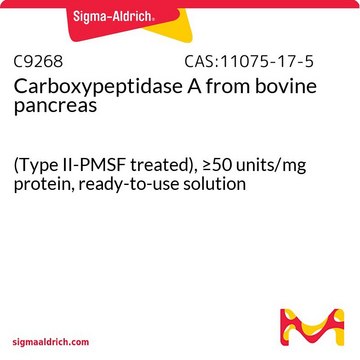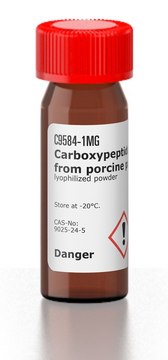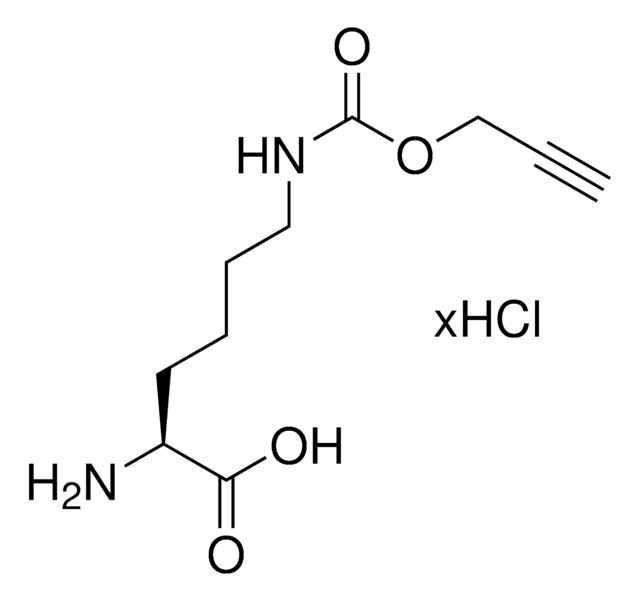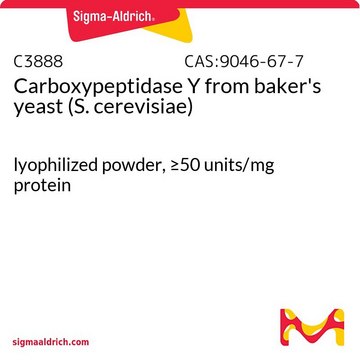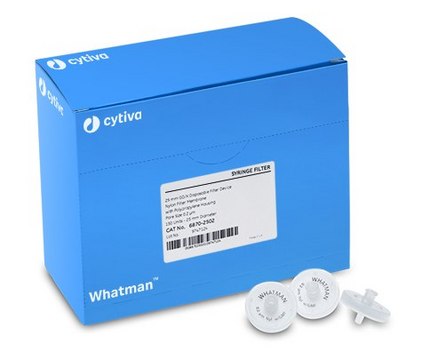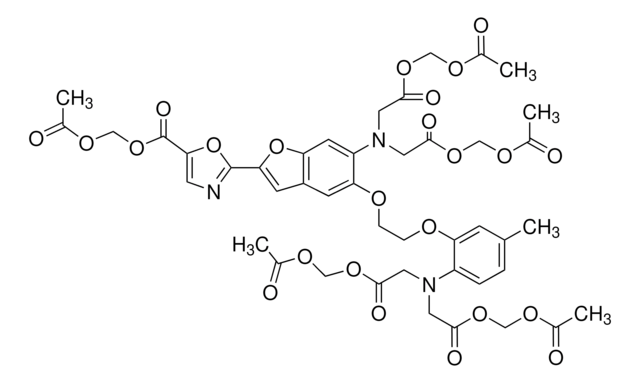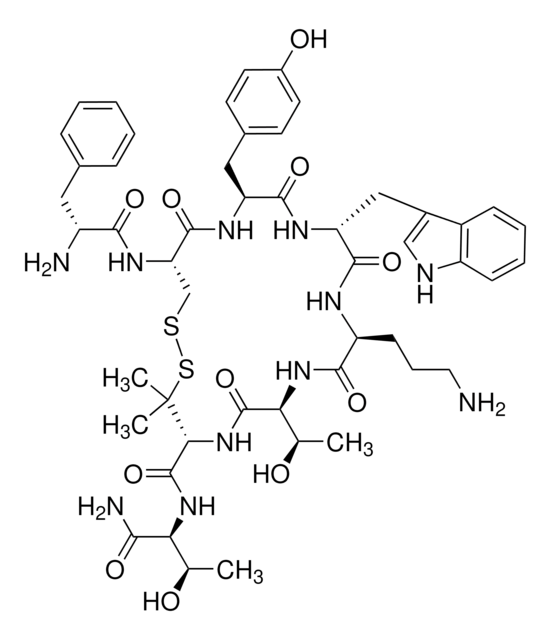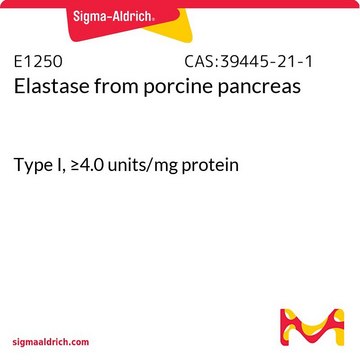CS1130
Carboxypeptidase A Assay Kit
sufficient for 200 assays (96-well plates), sufficient for 40 assays (1 mL cuvettes)
Sign Into View Organizational & Contract Pricing
All Photos(1)
About This Item
UNSPSC Code:
12352200
NACRES:
NA.84
Recommended Products
usage
sufficient for 200 assays (96-well plates)
sufficient for 40 assays (1 mL cuvettes)
Quality Level
shipped in
dry ice
storage temp.
−20°C
Gene Information
human ... CPA3(1359)
General description
Carboxypeptidase A (CPA) catalyzes the hydrolysis of C-terminal aromatic or aliphatic amino acids of proteins or peptides. Carboxypeptidase A is found in the pancreas and mast cells. Carboxypeptidase A in mast cells (MC-CPA) is a highly conserved secretory granule protease that is important for mast cell differentiation. MC-CPA levels rise during anaphylaxis, a severe acute allergic reaction. This enzyme is considered to be a sensitive marker for anaphylaxis, much more sensitive than the present marker tryptase. It has been suggested that MC-CPA can degrade snake venom components and honeybee venoms, thus having a protective function during envenomation.
Application
The Carboxypeptidase A Assay Kit allows for the determination of CPA activity in biological samples, as well as screening for enzyme inhibitors. The kit contains all the necessary components including a carboxypeptidase A control enzyme and carboxypeptidase inhibitor.
Unit Definition
1 unit will hydrolyze 1 μmole of N-(4-methoxyphenylazoformyl)-Phe-OH per minute at pH 8 at 25 °C.
Analysis Note
The CPA activity assay is based on the hydrolysis of the substrate N-(4-methoxyphenylazoformyl)-Phe-OH. The substrate has a strong absorption peak at 350 nm (εmM = 19.0). The reaction progression is reflected by a decrease in absorption at 350 nm.
Signal Word
Warning
Hazard Statements
Precautionary Statements
Hazard Classifications
Eye Irrit. 2
Storage Class Code
10 - Combustible liquids
Regulatory Information
新产品
Choose from one of the most recent versions:
Already Own This Product?
Find documentation for the products that you have recently purchased in the Document Library.
Mast cell carboxypeptidase as a new clinical marker for anaphylaxis.
Zhou, X., et al.
The Journal of Allergy and Clinical Immunology, 117, S85-S85 (2006)
W L Mock et al.
Analytical biochemistry, 239(2), 218-222 (1996-08-01)
N-(4-Methoxyphenylazoformyl)-L-phenylalanine is efficiently cleaved by the enzyme bovine carboxypeptidase A into fragments anisole, molecular nitrogen, carbonate, and phenylalanine, in the course of which an intense spectral absorption of the substrate (epsilon350 = 19,000 M-1 cm-1) disappears completely. This furnishes a
Martin Metz et al.
Science (New York, N.Y.), 313(5786), 526-530 (2006-07-29)
Snake or honeybee envenomation can cause substantial morbidity and mortality, and it has been proposed that the activation of mast cells by snake or insect venoms can contribute to these effects. We show, in contrast, that mast cells can significantly
Thorsten B Feyerabend et al.
Molecular and cellular biology, 25(14), 6199-6210 (2005-07-01)
Mast cell carboxypeptidase A (Mc-cpa) is a highly conserved secretory granule protease. The onset of expression in mast cell progenitors and lineage specificity suggest an important role for Mc-cpa in mast cells. To address the function of Mc-cpa, we generated
Tryptase-PAR2 axis in experimental autoimmune prostatitis, a model for chronic pelvic pain syndrome.
Kenny Roman et al.
Pain, 155(7), 1328-1338 (2014-04-15)
Chronic prostatitis/chronic pelvic pain syndrome (CP/CPPS) affects up to 15% of the male population and is characterized by pelvic pain. Mast cells are implicated in the murine experimental autoimmune prostatitis (EAP) model as key to chronic pelvic pain development. The
Our team of scientists has experience in all areas of research including Life Science, Material Science, Chemical Synthesis, Chromatography, Analytical and many others.
Contact Technical Service